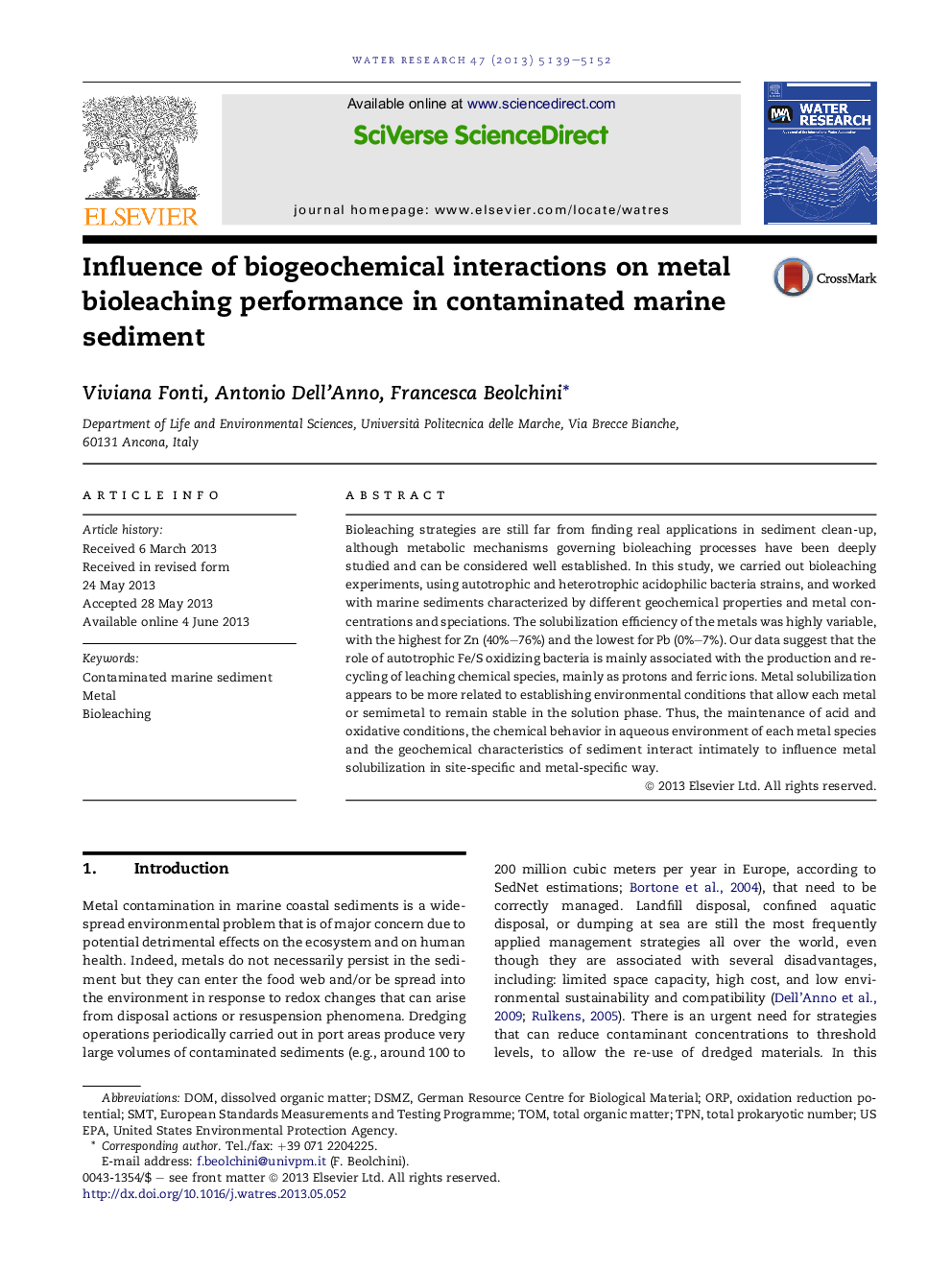| Article ID | Journal | Published Year | Pages | File Type |
|---|---|---|---|---|
| 6367609 | Water Research | 2013 | 14 Pages |
Abstract
Bioleaching strategies are still far from finding real applications in sediment clean-up, although metabolic mechanisms governing bioleaching processes have been deeply studied and can be considered well established. In this study, we carried out bioleaching experiments, using autotrophic and heterotrophic acidophilic bacteria strains, and worked with marine sediments characterized by different geochemical properties and metal concentrations and speciations. The solubilization efficiency of the metals was highly variable, with the highest for Zn (40%-76%) and the lowest for Pb (0%-7%). Our data suggest that the role of autotrophic Fe/S oxidizing bacteria is mainly associated with the production and re-cycling of leaching chemical species, mainly as protons and ferric ions. Metal solubilization appears to be more related to establishing environmental conditions that allow each metal or semimetal to remain stable in the solution phase. Thus, the maintenance of acid and oxidative conditions, the chemical behavior in aqueous environment of each metal species and the geochemical characteristics of sediment interact intimately to influence metal solubilization in site-specific and metal-specific way.
Keywords
Related Topics
Physical Sciences and Engineering
Earth and Planetary Sciences
Earth-Surface Processes
Authors
Viviana Fonti, Antonio Dell'Anno, Francesca Beolchini,
